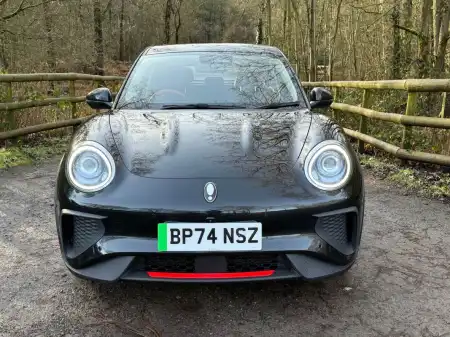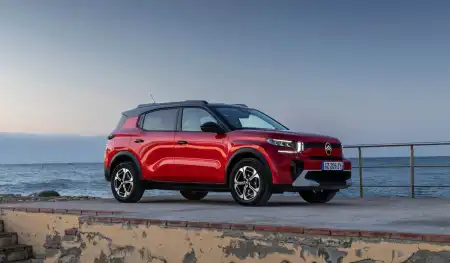- Big interior changes and subtle styling additions to the exterior
- Plenty of colours and customisation to make your Fiat 500 your own
- Good choice of engines including the TwinAir
- Not a lot of room in the rear for tall people
- Entry level Pop lacks air conditioning
Introduction
When the Fiat 500 was launched in its native Italy in 1957, the cute car was so popular as families bundled into them for trips away, or the many millions that made traffic jams around Turin, Milan or Rome. Nearly 60 years later the original iconic car has also become an in-demand classic with their value increasing all the time.
Fiat decided to relaunch the model in 2008 capturing the hearts of a very different audience, mainly women wanting a nice runaround that wasn’t boring in style or substance.
Not resting on their laurels, Fiat have launched the all-new 500 to try and keep them at the top of the highly competitive city car segment, a position they have held since 2009.
On The Road
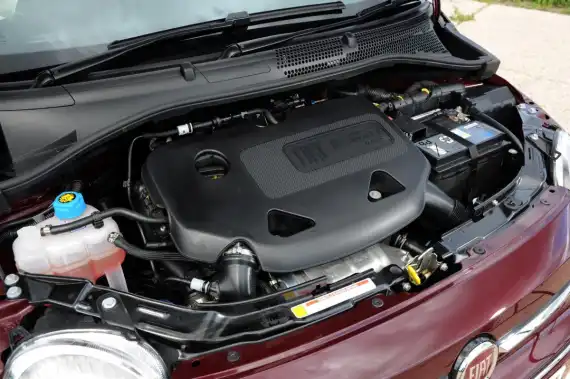
Performance
It might be a runaround but pair the 500 with the right engine and you have a rather lively little model. There are three petrol options to go for, a 1.2-litre that produces 69hp and has a top speed of 99mph, or the 0.9 Twinair turbo that is available with 85hp or 105hp. The latter makes a wonderful deep, throaty noise at low revs and with 145Nm of torque from 2000 rpm it is certainly no slouch.
The 1.2-litre engine is likely to be the most popular choice for buyers but before the end of 2015 Fiat will bring out a diesel option.
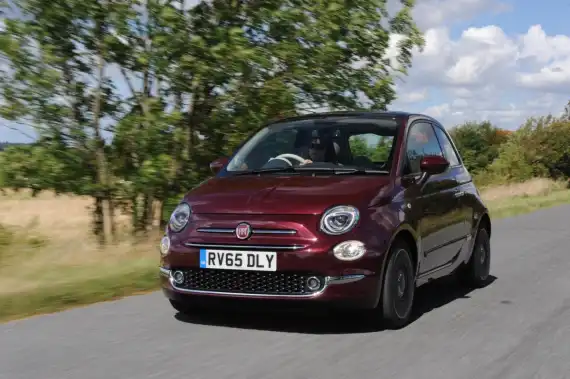
Ride Handling
The Fiat 500 is a fun car to drive, the ride might not always be too sympathetic on harsh surfaces but it made light work of zipping around London on the UK launch. A different route around the twisty country lanes away from the capital really meant the Fiat 500 could be pushed through its paces. It was very nimble although there was some body roll which dulled the steering input slightly, but it showed that it is more than just a city car.
Steering can also be adjusted at the touch of a button which will make it lighter, ideal for manoeuvring it into parking spaces and driving it around town.
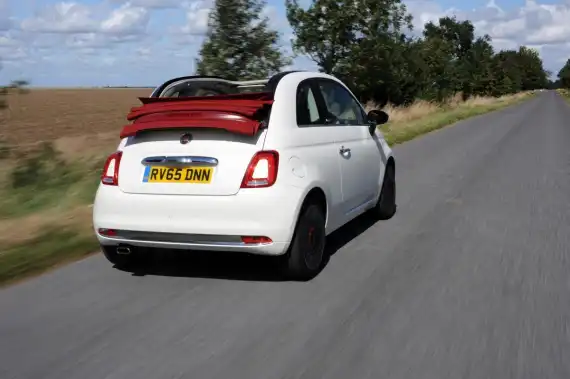
Styling
Cabin noise is quite limited, although naturally the convertible version, the 500C does let in quite a lot of wind and road noise.
The 1.2-litre petrol engine is fairly quiet at cruising speeds, only a bit noisy when setting off. To be expected the TwinAir variants are not quiet, it’s a bit like marmite, you’ll either love the noise or hate it but it does really suit the car.
In The Car
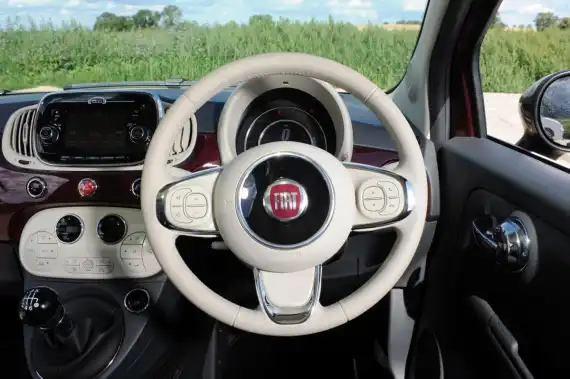
Behind the Wheel
The cabin is where Fiat have made changes, in tradition with their fun design it retains the brightly coloured plastic dashboard that now looks more sophisticated. The 5” touchscreen dominates the centre console and the familiar round driving display for the driver is really clear, provides plenty of information including speed, revs, gear shift indicator, temperature and the trip computer. It really does give the Fiat 500 the edge over rivals that just have the usual instrument cluster.
There are three trim levels to choose from: Pop, Pop Star and Lounge. Entry level Pop comes with items such as electric front windows, LED daytime running lights, a height-adjustable steering wheel and chrome door handles, disappointingly it’s not until you pick Pop Star which adds air-conditioning. Additions to this trim include 50/50 split folding rear seat, 15” alloys and electrically adjustable, body-coloured door mirrors with a defrosting and external temperature sensor - ideal for the approaching winter.
Top of the range Lounge which is likely to be the most popular has rear parking sensors, a fixed sunroof, a 5” touchscreen radio with Bluetooth and USB and chrome additions to give the Fiat 500 a wow factor.

Space & Practicality
The Fiat 500 is a city car so don’t expect to get huge amounts in it, with a decent 185-litre boot it’s possible to get in a couple of small suitcases or plenty of shopping but this is still a lot smaller than the 251-litres on offer in the Volkswagen Up!. Available from the Pop Star trim is the split folding rear seats so if you do need to get in larger items then it is possible.
With improved seats in the new Fiat 500, driver and passenger can sit in plenty of comfort in the front, there is a vast amount of leg room and there are plenty of storage places around the car too.
The rear is now much easier to get into but it’s still a struggle to sit in the back if you’re above average height as head and leg room is quite limiting.
Ownership
Running Costs
The Fiat 500 is competitively priced from £10,890, with plenty of ways to customise the model that won’t break the bank. With the funky colour choices including two new additions, Glam Coral and Avantgarde Bordeaux the new Fiat 500 retains its quirky, retro appeal.
Fiat also do their i-Deal on the new 500 which is a deposit of just £1,500 then a monthly £139 payment for the Pop version. It’s a great deal for those wanting to buy into the 500 brand.
Running costs are really good too with CO2 emissions as low as 90g/km on the 85hp TwinAir so there will be no Vehicle Excise Duty cost and with a combined 74.3 mpg, if you can get close to that figure, then the new Fiat 500 is a highly efficient car.

Quality & Reliability
The new Fiat 500 has a mix of durable plastics, leather and fabric that make the model feel really polished and to a high standard.
Paint trims look really good if it’s a pastel colour you choose or the metallics and if you want to increase the presence of the car on the road then patterns and motifs can be added to the exterior too in what will make it really stand out from the crowd.
The 2014 JD Power Survey saw the Fiat 500 take 7th spot in the city car category being beaten by the Fiat Panda in terms of reliability. Hopefully this new 500 will improve fortunes for the Italian brand.
Safety & Security
The new Fiat 500 comes with seven airbags so there is plenty of protection for driver and passengers. There are Isofix points for child seats in the rear and driver’s aids include Electronic Stability and hill control, a sudden braking assistance system and a device that switches on the hazard lights during emergency braking.

